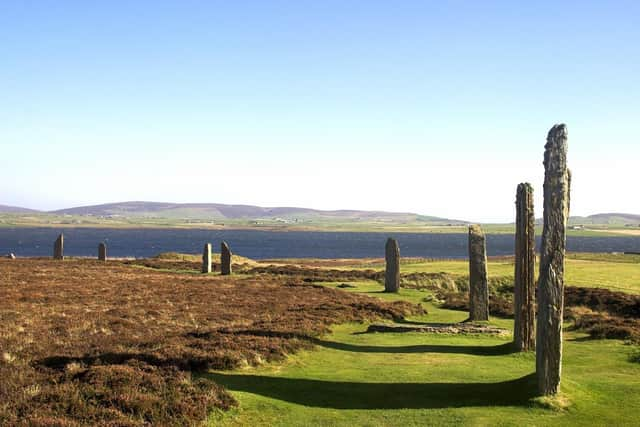Ring of Brodgar: Tourists turning site into 'open-air toilet'
Land next to Orkney’s ancient Ring of Brodgar has become an “open air toilet” amid rising visitor numbers with tourism leaders calling for proper facilities as an “absolute necessity”.
Councillors recently voted against funding seasonal loos at the 5,000-year-old Neolithic wonder despite Destination Orkney, which represents tourism businesses on the island, making a renewed plea for conveniences.


Advertisement
Hide AdAdvertisement
Hide AdThe situation is now so bad that tour guides are urging visitors to stay away from the edge of Harray Loch by the car park given it is now being used as a toilet, it has been claimed.
A letter from Destination Orkney to councillors at the general meeting of Orkney Isles Council (OIC) this week said: “Repeated instances of public defecation and urination have been rife at the Ring of Brodgar in 2023 and this will only get worse with more visitors.
“Not only is this damaging to the local environment but it also severely damages the reputation of Orkney as a safe and inclusive tourist destination, something that should be a priority of OIC.
“It is common knowledge amongst tour guides that the Harray loch shoreline by the Brodgar coach park is now an open-air toilet, therefore guests are well advised to stay away from the edge while taking photographs.
“This is both a major environmental health issue, but also the lack of basic facilities lets down every single visitor to the islands.”
Temporary toilets at the site are estimated to cost £95,000 for a three-year-period but councillors instead voted to include the Ring of Brodgar in a review of key sites across the islands amid a view that toilets were not the responsibility of the local authority.
HES, which manages the site, made an initial offer of £4,000 towards the cost, it is understood.
The issues at Ring of Brodgar come amid wider concerns surrounding the impact of tourism in Orkney, which is now the number one destination for cruise ships in the United Kingdom.
Advertisement
Hide AdAdvertisement
Hide AdAn estimated 320,000 people visited the islands last year with tourism generating more than £87m for the local economy. Cruise ship business has increased beyond pre-pandemic levels and the war in Ukraine, which has limited sailings into the traditionally popular Baltic ports, has also driven more ships to Orkney. Work is ongoing at Kirkwall Harbour to control daily passenger numbers, many who disembark for day trips across multiple key attractions.
An estimated 250,000 cruise ship passengers are due to arrive in Orkney in 2024 compared to just over 132,000 in 2019.
High footfall at Ring of Brodgar, which attracts around 150,000 a year with numbers also expected to increase, has led to erosion at the site with the inner path closed for “short periods” during periods of high footfall or heavy rainfall.
A report to a recent policy and resources committee said: “Increasing tourism pressures exacerbated by seasonality have accelerated the deterioration of Orkney’s ageing tourism infrastructure and with it, the visitor experience and community wellbeing.
“Strong seasonality and significant tourism growth have delivered concentrated visitation to Orkney during the summer months. Consequently, pressure on the Islands’ most popular natural and cultural heritage attractions has grown and visitor footfall has interacted with changing weather patterns to cause significant erosion at certain sites.”
Comments
Want to join the conversation? Please or to comment on this article.
